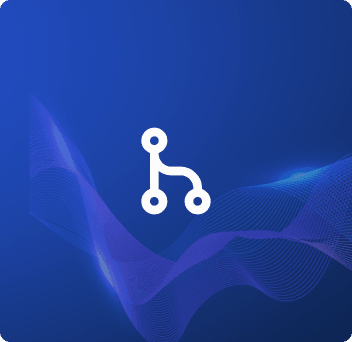Updated: December 18, 2025- 23 min read
If you spend your days talking to product leaders the way I do at Product School, patterns start to show up fast. As the host of The Product Podcast, I sit down every week with CPOs and product leaders from companies like Slack, Intercom, HubSpot, and beyond. Every conversation, from Fortune 500 teams to fast-moving SaaS startups, keeps circling back to the same topic: AI in product.
What’s emerging is a massive shift with blurred edges. Suddenly, everyone is an “AI product manager.” Some mean they use AI tools. Others mean they build AI features. A few aren’t entirely sure what they mean at all; they just know they don’t want to be left behind.
So I want to clear this up. In this piece, I’ll break down what an AI product manager actually is, why the title sparks so much debate, what separates an AI-powered PM from someone building AI products, and what skills you need to stay relevant as the fourth industrial revolution reshapes our industry. Let’s get into it.
AI Prompt Template
Engage effectively with natural language processing chatbots to ensure quality results.
GET THE TEMPLATE
What Is AI Product Management?
AI product management refers to the development and overseeing of AI products throughout their entire lifecycle. AI products are unique because they evolve with the data they process, unlike traditional software, which is deterministic and based on set algorithms.
AI products learn. This dynamic nature makes the development process for AI products continually adaptive. What sets them apart:
High-Performance (the “wow” factor): AI products deliver exceptional user experiences, providing capabilities that traditional methods cannot achieve.
Adaptability: These products adjust to changes in user behavior and conditions, maintaining their effectiveness over time.
Scalability: AI products can expand to serve broader audiences without losing performance.
Competitive Advantage: Mastering AI gives a business a sustainable edge in the market.
Navigating the New AI Frontier in Product Management
I’ve been in product management long enough to see a few hype cycles come and go. But let me tell you, this AI wave is unlike anything before.
Elena Verna, Head of Growth at Lovable, framed it sharply on the ProductCon stage:
Platform shifts are everywhere. Your product roadmap includes something related to AI, I'm sure. Otherwise, you're living on the moon, or your CEO is not paying attention.
That’s a sweeping statement, and I agree with it. Most product leaders I talk to agree as well.
AI is a paradigm shift. Therefore, naturally, this raises questions about the role of the “AI Product Manager.” Is it a real title? A gimmick? Or simply the product manager of the future? Some say there’s no such distinct role at all (after all, a great PM will use whatever tech is available); others proudly wear the “AI Product Manager” title to signal their specialization.
AI Product Manager Job Description
From my perspective, the title itself matters less than the skillset and mindset behind it. But for the sake of clarity, let’s map out the landscape.
In this new AI era, I see all AI-related PM roles falling into three (unofficial) buckets:
Traditional Product Managers – folks who stick to the classic PM toolkit without really embracing AI. (Spoiler: this breed is rapidly becoming obsolete.)
AI-Powered Product Managers – those who supercharge their work with AI tools. They might not build AI features themselves, but they use AI to do their job faster and better.
AI Product Managers (AIPMs) – PMs who build AI-driven products or features. They’re integrating AI into the product itself, which brings a whole new set of challenges and responsibilities.

Type #1 is fading fast. In 2026 and beyond, there’s little room for a PM who isn’t leveraging AI in some form. Kind of like a photographer refusing to go digital.
Recently, McKinsey found demand for AI fluency in job postings had grown nearly sevenfold in two years, with most of that demand sitting in management and business roles, including product. Also, McKinsey now estimates that AI agents could technically handle tasks representing around 44% of US work hours. Product managers who adopt AI now will replace those who don’t. Why?
Because a PM using AI can accomplish more in the same time, often with better results. It’s adapt or get left behind. Or as I sometimes quip: if you’re not using AI as a PM, you’re bringing a knife to a gunfight.
So let’s focus on the PMs who do have a future: the AI-powered PMs and the AI product managers. I want to unpack both roles: what they mean, what you need to know, and how you can level up to thrive in this AI product world.
The Rise of AI-Powered Product Managers
AI-powered product manager isn't a formal job title. These are product managers who use AI as a force multiplier in their day-to-day work. They’re not necessarily building AI from scratch, but they are powered by AI tools in the same way a cyborg is enhanced by technology. As a result, they can outperform their “unaugmented” peers.
Let me be clear: if you’re a traditional PM who hasn’t leaned into AI, your days in the field may be numbered. I don’t say that to be harsh. It’s just the direction the industry is headed. Frank te Pas, Head of Product at Perplexity, put it this way on The Product Podcast:
AI enables PMs to do more of sort of the most important product work. It can help with creating enablement materials. It can help with tracking metrics and coming up with insights. It can do so much for you to be more efficient.
In other words, AI frees you up to focus on the strategic and creative parts of product management by taking care of a lot of the grunt work. Every company right now needs to figure out its AI stance. As Frank te Pas continues:
Every company should at least be an AI company, but should strive to be an AI-first company... That’s what turns your product into a future-proof product. As AI becomes smarter, you want to be able to easily swap out parts of your product with AI capabilities.
If every company should be an AI-first company, then every product manager should at least be an AI-powered product manager. So what does that look like in practice?
New skills and mindsets for an AI-powered PM
For starters, AI-powered PMs cultivate some new competencies that weren’t part of the traditional PM job description. You don’t need to become a hardcore machine learning engineer, but you do need to become conversant in the language of AI. That includes:
AI-aware product thinking: recognizing which problems are suited for AI solutions and which aren’t. Even as an AI-powered PM (not building the AI yourself), you should develop a nose for where AI can add value in your domain and where a simpler rule-based approach might suffice. This kind of judgment is gold for both your current role and any future leap into building AI features.
Data fluency: understanding the data your product and business generate, and how AI might use it. This means knowing the basics of how models learn from data and the importance of data quality. (No more shrugging off the details of the dataset; it’s now part of your concern.)
Prompt crafting: if you’re using generative AI tools (say, GPT-4 for product managers) to assist with tasks, you quickly learn that how you ask is everything. Crafting good prompts becomes a mini art form, and it’s a skill PMs are learning to get the most out of AI.
Vibe coding and scrappy builds
Turning rough ideas into working demos in hours, not weeks. Using AI and no-code tools to spin up simple internal apps, user flows, or UI mocks that stakeholders can click through and react to.Hands-on AI prototyping
Using LLMs and off-the-shelf APIs to build quick, high-fidelity AI prototypes (chat flows, assistants, smart forms), then putting them in front of users to test value before engineering commits.Designing “AI-in-the-loop” workflows
Mapping where AI can draft, summarize, route, or decide inside existing processes (user research, product prioritization, reporting), and restructuring workflows so humans review and refine rather than start from zero.AI agent and automation literacy
Setting up basic agents and multi-step automations that handle recurring PM work. Think agents that triage feedback, cluster feature requests, prep release notes, or keep dashboards and briefs up to date.Data- and AI eval-aware decision making
Understanding the data these tools rely on, sanity-checking outputs, and using simple “eval” style checks (spot tests, edge cases, benchmarks) before trusting an AI workflow in a critical process.Experimental, tool-first mindset
Treating new AI tools like a playground: regularly trying them on real tasks, keeping what meaningfully reduces cycle time, and discarding what’s just hype. Always asking, “Where does this change my throughput as a PM?”
Perhaps most importantly, AI-powered PMs have a mindset of experimentation and continuous learning. They’re the ones who, when a new AI tool or API comes out, spend a weekend playing with it to see how it might make their work better. They’re not afraid of automation; they’re excited by it. Their attitude is, “If a tool can take over 70% of my task, great”.
AI Prototyping Certification
Go from idea to prototype in minutes. Build, debug, and scale AI prototypes with the latest tools to integrate APIs securely and hand off to engineering fast.
Enroll now
Automating the busywork: let AI do the heavy lifting
So what tasks can a product manager actually automate or accelerate using AI? It turns out a whole bunch of things which used to eat up our hours. Here are some examples of where AI can assist you today:
Analyzing customer feedback: AI summarizes interviews, tickets, and surveys, highlighting patterns and themes in minutes.
Drafting product documents: AI creates first drafts of PRDs, user stories, and release notes so you can skip the blank-page stage.
Product data analysis: AI tools answer questions in plain English, surface trends, and flag anomalies faster than manual digging.
Backlog grooming and prioritization: AI groups related ideas, removes duplicates, and suggests priorities based on your criteria.
Prototyping and design help: AI prototyping turns text descriptions into quick wireframes or UI sketches to speed up alignment.
Deploying simple agents: AI agents can be set up to autonomously handle specific workflows across your tools, and are often easy to configure using natural language instructions.
In fact, these AI tools on the list today can already handle parts of roadmap research and documentation that used to take us hours. They can summarize user research, analyze product metrics, draft product briefs, and even generate initial design mockups.
I’ve seen AI suggest draft OKRs and pull together slide decks with market analysis. These tasks once kept PMs working late into the night. An AI-powered PM leverages all of this.
They’re essentially managing the orchestra of AI tools to take care of the busywork, so they can spend more time on high-level product strategy, creative problem-solving, and stakeholder communication: the things that (for now) AI can’t do as well.
Tools of the trade: the AI arsenal for PMs
What kind of tools are we talking about? It ranges from general-purpose AI like ChatGPT to product-specific AI software:
General AI assistants: ChatGPT, Bard, Claude, and similar tools help with brainstorming, drafting content, refining docs, and acting as an always-on thought partner.
AI-enabled PM software: AI-powered roadmaps, product analytics, and project tools now include AI features that surface insights, summarize strategy, automate reporting, and streamline product prioritization.
No-code AI platforms: Tools that let PMs build chatbots, simple models, or automated workflows without coding; perfect for quick AI prototypes, MVPs, or internal AI helpers.
Domain-specific AI tools: Industry-focused AI solutions for tasks like growth experimentation, demand forecasting, or personalization that give PMs an edge in their niche.
Natural language agent builders: Emerging tools like OpenAI’s Custom GPTs, Microsoft Copilot Studio, or Zapier Central that allow you to build autonomous agents simply by describing their instructions, role, and permissions in natural language, no programming required.
The spectrum of AI adoption among PMs is wide. Some are just using ChatGPT occasionally; others are building entire custom AI agents to automate their workflows.
Wherever you fall on this spectrum, the goal should be to keep moving forward. The further along the learning curve you are (from simply using AI suggestions in Google Docs, up to integrating an AI API into a tool you use), the more future-proof your career becomes. And honestly, it’s fun to try this stuff out! The PMs who experiment with AI are learning faster what it can and can’t do, which informs their product strategy as well.
One fascinating development is the concept of AI agents acting as personal “co-PMs.” I’ve seen some cutting-edge product folks chain together AI models (using frameworks like LangChain) to create agents that do multi-step tasks for them.
Imagine an AI agent that can review incoming feature requests, spec out a requirements doc, and email you a summary each morning – we’re there. I even tried a little experiment where an AI agent monitored our user feedback Slack channel and periodically summarized top pain points. It wasn’t perfect, but it saved me a lot of scrolling.
Advanced AI Agents Certification
Design and implement adaptive, multi-agent AI systems with memory, collaboration, and risk safeguards. Deploy production-ready AI agents at scale.
Enroll now
Don’t get left behind: upskilling for the AI-powered product managers
If reading this makes you a bit anxious about catching up, don’t worry, you’re not alone. The good news is that you can rapidly gain these AI skills with a bit of dedication and the right resources. Here are some ways to level up:
Hands-on play: Set aside an hour a week to try a new AI tool or feature. Have an idea for automating a small part of your job? Give it a go. The stakes are low (maybe you waste an hour if it fails, but often you learn something useful).
Learn from the community: There are thriving communities of PMs sharing how they use AI. Online forums, LinkedIn groups, and webinars are full of practical examples. Hearing how another PM automated their roadmap planning or user research analysis can spark ideas for your own work.
Formal training: Sometimes you need a structured way to build knowledge fast. This is where courses or certifications can help. For example, at Product School we introduced an AI for Product Managers certification precisely to help PMs get up to speed on these new competencies. It covers adopting an AI-first mindset, using AI in prototyping and product development, and even building comfort with concepts like AI agents and modern AI-powered PRDs.
The bottom line for the AI-powered PM is this: embrace AI as your new superpower, not as a threat.
Augment yourself with the best tools available. Automate the drudgery so you can do the fun parts of product management (the creative, strategic, human parts) even better. In the next few years, I believe “AI-powered” will be a redundant term; it’ll be assumed that every competent PM uses AI, just like we use the internet or spreadsheets.
What Is an AI Product Manager?
AI Product Manager is a PM who is responsible for products or features that are powered by AI. At least, that's how I define the term. This means the core of what they’re building involves machine learning or other AI techniques: whether it’s a standalone AI product (like a platform that uses AI to answer questions, e.g. ChatGPT) or an AI-driven feature within a larger product (like a recommendation engine in an e-commerce app).
On the surface, they’re still product managers. They figure out user needs, define roadmaps, get a stakeholder buy-in, work with engineers/designers, and ship features. But under the hood, building AI products is a different ballgame compared to traditional software products.
The AI PM’s world has some unique rules, challenges, and rewards. Let’s break down what makes AI product management distinct.
Mindset shift: From deterministic to probabilistic product development
Traditional software is deterministic. You set up logic and if/then rules, and the software behaves predictably (at least until bugs creep in).
AI software, especially machine learning-based products, are probabilistic. This means an AI product might not behave the exact same way every time given the same input. It learns patterns and makes inferences, which can sometimes be wrong or unexpected.
As a result, an AI PM needs a mindset shift:
Embrace iteration: AI features require product experimentation. Models improve through cycles of iterative testing, tuning, and real data feedback.
Expect continuous updates: AI isn’t “one and done.” Models drift and need retraining, monitoring, and fresh data to stay accurate.
Design for uncertainty: AI will get things wrong. Build product experience that handles errors gracefully: fallbacks, corrections, and clear signals to maintain trust.
In essence, AI product management adds a layer of complexity. You’re not just managing code, you’re managing a learning system.
What does an AI product manager do?
All product managers share some core responsibilities, but AI PMs have additional ones on their plate because of the nature of AI products. Based on my experience and what I’ve learned from AI product leaders, here are some key things AI PMs specifically focus on:
Identify where AI adds real value: Evaluate whether a problem truly needs AI, whether you have the right data, and whether an AI solution would meaningfully outperform a simpler one.
Own data strategy: Define data needs, ensure quality and labeling, monitor bias, and maintain pipelines that keep models learning over time.
Set dual success metrics: Track both product outcomes (engagement, retention) and model evaluation metrics (precision, recall, latency) and understand what “good enough” looks like for each.
Run rigorous AI evals: Coordinate offline tests, A/B experiments, edge-case evaluations, and ongoing monitoring to ensure the model behaves reliably after launch.
Manage ethics and risk: Anticipate failure modes, put guardrails in place, handle privacy/consent, reduce bias, and involve legal/ethics teams when needed.
Translate across teams: Bridge product, engineering, data science, and leadership — clarifying model constraints, explaining trade-offs, and aligning everyone on what the AI will and won’t do.
AI Evals Certification
Learn to build trusted AI products. Design eval suites, integrate CI/CD gates, monitor drift and bias, and lead responsible AI adoption.
AI Evals Certification
AI PMs take on extra complexity, but the payoff is huge. AI products can create real differentiation. You know, the kind of “this feels like magic” experience users remember. And because these systems learn and improve, you’re shaping something that evolves, not something static.
You’re also working on technology that didn’t exist a few years ago. That might mean building AI-powered workflows for doctors, AI developer tools, or fully autonomous agents that break down tasks, plan steps, and execute. As Tim Simmons, Senior Vice President and Chief Product Officer at Walmart International, put it on stage at ProductCon:
Product managers are shifting from pure problem solvers to AI orchestrators. Our job now is to harness fleets of agents and all of our complexity so that scale becomes a competitive advantage instead of something that slows us down.
This shift toward agentic products opens an entirely new category of work. AI PMs who understand how to design and guide these systems (and how to keep them safe, useful, and aligned) will be incredibly valuable in the years ahead.
What tools do AI product managers use?
Product managers today have access to a growing ecosystem of AI-powered tools that can streamline workflows, uncover insights, and accelerate decision-making. From Gen AI for drafting user stories or generating ideas to automating routine workflows using AI agents for product managers, AI/ML for product managers is fundamentally changing how PMs tackle strategy and execution. When integrated thoughtfully, they free up bandwidth for high-impact work, enabling product leaders to stay ahead of the curve.
Some of my favorite use cases include:
AI prototyping with Vercel
Turning session replays into insights with LogRocket
Connect user feedback to feature ideas with Productboard
Chat with your data with Mixpanel
Build surveys and gather insights with Sprig
Accelerate product development with Airfocus
Write code and build prototypes with AI using Cursor
How much do AI product managers make?
AI product managers typically sit at the top end of the PM pay range.
In the US, recent Glassdoor data puts average total compensation around $160k–$190k per year, with most roles falling roughly between $150k and $230k, and senior roles in big tech or AI-first companies often reaching $250k–$300k+ and occasionally $350k+ (for example, at C3.ai or TikTok).
In AI startups, product managers in the “artificial intelligence” category average about $163k (roughly 20% above general PM roles). UK figures, meanwhile, show AI product managers earning around £77k on average, with higher pay in London and senior positions. Actual compensation varies widely with location, seniority, company stage, and equity/bonus mix.
Which companies are hiring AI product managers?
Companies hiring AI product managers are mostly in the ICT sector. LinkedIn currently shows over 40,000 roles worldwide with “AI Product Manager” in the title, and Indeed lists more than 3,000 AI PM openings in the US alone.
Large tech and cloud companies actively recruiting AI PMs include Google (e.g., Vertex AI and Generative AI roles), Amazon (multiple senior AI Product Manager positions), Microsoft (Copilot and Edge AI teams), and Meta (Business AI and AI data platform roles).
High-growth AI-native firms like Scale AI, TikTok, and many venture-backed startups are also hiring AI product managers, and curated boards such as BuiltIn and TrueUp track AI PM openings across startups, fintech, cybersecurity, SaaS, and other verticals.
How to Become an AI Product Manager
1. Build your AI knowledge base
You don’t need to become an ML engineer, but you do need literacy. Learn how models are trained, what inference means, how neural networks and LLMs work at a high level, and what the typical AI development cycle looks like.
This isn’t about math. It’s about being able to speak the language of your data science teammates, understand model limits, and make informed product decisions based on how the system actually works.
2. Get hands-on with data and simple models
The fastest way to understand AI is to build something small. Try a no-code ML tool, train a basic classifier, or play with a public dataset to predict something simple.
You’re not trying to become a data scientist. You’re trying to understand how data behaves, how models fail, and what it really takes to move from idea to working AI prototype. This builds empathy and sharpens your thinking.
3. Immerse yourself in AI product case studies
Study how real teams build AI features. Look at lessons from companies like YouTube, Spotify, and Airbnb: how they approached data, training, evaluation, PX, and iteration.
These stories reveal the hidden challenges behind AI products: organizational alignment, infrastructure, accuracy trade-offs, model drift, ethics, and rollout risk. They’ll give you a more realistic view of the job.
4. Up-level your toolkit with AI-focused courses
If you want structure and speed, take specialized programs. At Product School, we built advanced tracks for AI prototyping, AI agents, and AI evals. These are all designed for PMs who want to build AI-native products, not just use AI tools.
These courses help you learn how to create quick prototypes, design agentic systems, and run proper evaluation frameworks. They also signal to employers that you’re serious about this craft.
5. Work on an AI project at your current company
Nothing accelerates your learning like real experience. Volunteer for any AI initiative, even a small internal pilot. Help define requirements, gather data, or support a proof of concept.
If your company isn’t doing anything with AI yet, pitch a low-risk experiment or do it in your private time. The goal isn’t perfection. The goal is getting your first “I built this with AI” story under your belt.
How to Decide When to Build with AI
Deciding whether to use AI isn’t as simple as “AI is hot, let’s use it.” Good AI product managers know that every AI feature carries added complexity, cost, and risk, and that not every problem deserves a model.
What follows is a practical guide to help you make that call with confidence. It’s meant for PMs who already work with AI or are close to it, and who want a clearer, more structured way to evaluate when AI truly creates value.
Start with the real user problem
Begin with the same question every great PM asks: what problem are we solving? Not every problem needs AI. If simple logic or deterministic rules solve the issue cleanly, use them.
Reserve AI for problems involving prediction, personalization, classification, or messy unstructured data where traditional approaches hit a ceiling.
Compare AI impact to simpler alternatives
AI only earns its place when it meaningfully outperforms a baseline. If a heuristic (a simple, rule-based approach) gets you 90–95% of the outcome, you need to know whether AI can push that significantly further—and whether that boost is worth the added complexity, maintenance, and risk. Evaluate the incremental user value, not just technical novelty.
Audit your data and technical resources
AI thrives on data. No data, no model. Before committing, check whether the data you need exists, whether it’s clean enough, whether labeling is feasible, and whether you have (or can access) the ML talent to build and maintain the solution.
If not, consider third-party AI services, but factor in cost, integration time, and long-term limits.
Prototype fast to validate real potential
When uncertain, run a quick proof of concept. This could be a no-code model, a Wizard-of-Oz simulation, or a lightweight experiment using an off-the-shelf API.
The goal is to understand whether AI actually moves the needle. A single afternoon POC can save weeks of misguided investment.
Weigh failure modes, UX implications, and risk
All AI fails sometimes. What matters is how it fails.
Map out the consequences of incorrect outputs: Is the cost low (a wrong recommendation) or high (a medical misclassification)? Decide whether you need guardrails, human review, fallback flows, confidence indicators, or user-controlled overrides.
To dive deeper into this topic, read our build vs. buy piece.
The Future of the AI Product Manager
AI doesn’t diminish the role of the product manager; it expands it. AI will not replace product managers. The PMs who thrive won’t be the ones who memorize frameworks or chase every new model release. It’ll be the ones who stay curious, who experiment boldly, who understand when AI elevates a problem and when it muddies it.
We’re shaping products that learn, evolve, and surprise us. That’s not just another skill upgrade. It’s a creative leap for the entire discipline. So take the next step. Build something small, test something new, and lean into the parts of this wave that excite you.
The industry is shifting fast, and there’s room for the PM who’s willing to meet it with both imagination and intent. The role isn’t fully defined yet, and that’s the opportunity.
AI PRD Template
Plan, strategize, and align stakeholders around the key requirements unique to AI products.
By sharing your email, you agree to our Privacy Policy and Terms of Service

Updated: December 18, 2025





